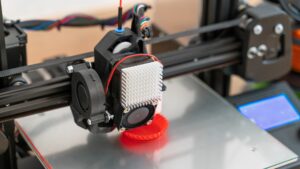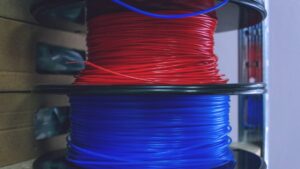
A Look at the Different Densities of 3D Printing Materials
There’s so much to learn about 3D printing materials. Come and find out what to look for when examining the different densities of 3D printing filaments.
844-810-1385
3D printing is an intriguing process, but it does take time to master. It’s a good idea to reference a beginner’s guide to understanding 3D printer filaments as you start to explore the creative opportunities presented by this new design equipment.
The biggest thing to know is that a 3D printer isn’t like a standard printer that uses paper. A 3D printer is part of a CAD program that uses special software to create 3D models made from different materials, such as powder and foam.
These large machines require ample space and must be kept away from clutter because the chamber heats up fast and can create fires if it doesn’t have room to vent. There are three standard sizes of 3D printers:
3D filaments derive from various materials, but nylon, ABS, and PLA are the most common. These 3D printer filaments have different features, and many are used in multiple processes. Nylon is most commonly used in models that need movement. You can find nylon used in entertainment, industrial, and architectural industries.
Companies often use ABS filament for strength. The material features a hard surface that won’t scratch as long as it’s stored properly. PLA filament is a weaker material, but it’s preferred when making disposable items like tableware, loose fill, and food packaging.
The other filaments used in 3D printing are:
A 3D printer is complex, especially for beginners. You should know that operating this type of device requires more than a design idea—it involves math and some skill in CAD. Once you’ve learned the basics of CAD programming, you can begin to learn 3D printing.
3D printing involves creating layers to form an object. The machine uses many materials, but you should limit yourself to only one if you need your print to possess a certain characteristic, such as resistance. This machine requires additional software to work, which will come with the manufacturer’s instructions.
Every 3D printer has limitations on the shapes it can produce and the materials it can use. Plastic objects need a specialized form of material to 3D print. PLA would be the best choice because it softens instead of burns when heated.
3D printers print a lot of things but are limited on material and shape—keep that in mind. You can create tripods, toys, shoe designs, and more. Expand your horizons even further by purchasing from reputable 3D filament suppliers.
You can do a lot with a 3D printer. As you learn how 3D printer filaments work, make sure you keep this guide as a resource. If you need further help or have questions, reach out to Filamatrix. We’re here to help in every way with choosing the best filament for you and your project.

There’s so much to learn about 3D printing materials. Come and find out what to look for when examining the different densities of 3D printing filaments.

Those interested in 3D printing have a lot to learn on how to use the system properly. Find out what you need to know about 3D printing and humidity levels.

3D printing has many variables that both beginners and experts need to know. Find out what effects temperature has on 3D printer filament.
Get professional insights, industry news, and our latest deals